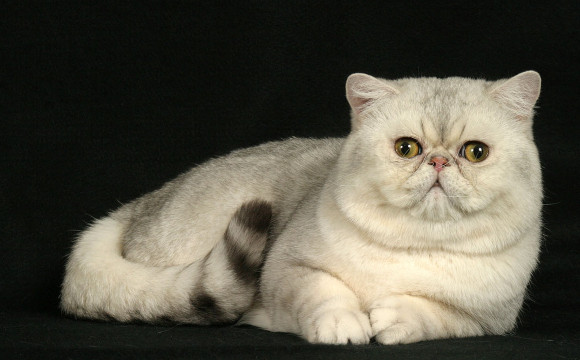Introduction
The Exotic Shorthair cat, known for its Persian-like appearance but with a short coat, has become a favorite among cat enthusiasts. This guide explores the history, characteristics, and care tips for the Exotic Shorthair breed.
History
Origins
In the late 1950s, American Shorthair breeders sought to introduce Persian traits into their cats, leading to the development of the Exotic Shorthair. The initial goal was to improve body type and coat quality, specifically aiming for the popular silver Persian color. This hybridization effort led to significant changes in the American Shorthair’s conformation, resulting in heavier bones, rounder heads, and shorter noses.
Recognition and Development
The Exotic Shorthair breed faced opposition from traditional American Shorthair breeders. However, CFA judge Jane Martinke’s support led to the breed’s recognition. In 1967, the CFA accepted the Exotic Shorthair for Championship status, allowing breeders to register their hybrids under this new classification.
Breeding Challenges
Initially, Exotic breeders used Burmese and Russian Blues to maintain the shorthair gene while developing the breed. The CFA eventually limited these outcrosses, mandating Persian as the only allowable outcross from 1987 onwards. Despite slow progress, the Exotic Shorthair gained popularity, with the first Grand Champion emerging in 1971 and notable wins in the early 1990s.
Characteristics
Personality
Exotic Shorthairs share a similar temperament to Persians. They are quiet, affectionate, and enjoy human companionship. These cats are playful, often engaging in games like catching catnip mice. They are more active than Persians due to the American Shorthair influence, though some breeders note little difference between the two breeds’ personalities.
Physical Traits
The Exotic Shorthair has a round head, short nose, and dense, plush coat. Their body is cobby with strong bones, giving them a sturdy appearance. The coat is easier to maintain compared to the Persian’s long fur, making grooming less time-consuming for owners.
Health
Exotic Shorthairs are generally healthy but can be prone to the same genetic conditions as Persians, such as polycystic kidney disease (PKD). Regular vet check-ups and a balanced diet are essential for maintaining their health.
Care Tips
Grooming
While the Exotic Shorthair’s coat is shorter and denser, it still requires regular grooming to prevent matting and shedding. Weekly brushing is usually sufficient to keep their coat in good condition.
Diet
A balanced diet rich in protein and essential nutrients supports the Exotic Shorthair’s health. Fresh water should always be available, and treats should be given in moderation to avoid obesity.
Exercise
Exotic Shorthairs enjoy playtime and interactive toys. Providing a variety of toys and engaging in play sessions helps keep them mentally and physically stimulated.
Health Monitoring
Regular veterinary visits are crucial for early detection of potential health issues. Genetic testing for PKD can help in managing this condition. Keeping an eye on their dental health is also important, as dental issues are common in this breed.
Breeding and Showing
Breeding Practices
Breeding Exotic Shorthairs requires careful consideration of genetic traits. Approximately 50% of kittens from Exotic/Persian matings may have long hair if the Exotic parent carries the recessive gene. These longhaired kittens are often not show-eligible, presenting a challenge for breeders aiming for show-quality Exotics.
Showing Standards
Different cat associations have varying standards for showing Exotic Shorthairs. The CFA currently does not recognize longhaired Exotics as show cats, though other associations like TICA and ACFA have different classifications. Breeders and fanciers are advocating for more inclusive standards to accommodate longhaired Exotics in shows.
Conclusion
The Exotic Shorthair cat breed combines the best traits of Persians and American Shorthairs, resulting in a charming and affectionate companion. With proper care, grooming, and attention to their health, Exotic Shorthairs can be a delightful addition to any household.
Frequently Asked Questions (FAQs)
1. Are Exotic Shorthairs good for families?
Yes, Exotic Shorthairs are known for their affectionate and gentle nature, making them great companions for families with children and other pets.
2. How often should I groom my Exotic Shorthair?
Weekly brushing is typically sufficient to keep their coat in good condition. During shedding seasons, more frequent grooming may be necessary.
3. What health issues are common in Exotic Shorthairs?
Exotic Shorthairs can be prone to polycystic kidney disease (PKD) and dental issues. Regular vet check-ups and genetic testing can help manage these conditions.
4. Do Exotic Shorthairs need a lot of exercises?
While they are more active than Persians, Exotic Shorthairs do not require excessive exercise. Regular playtime and interactive toys help keep them stimulated.
5. Can I show my longhaired Exotic Shorthair?
This depends on the cat association. The CFA does not recognize longhaired Exotics for showing, but other associations like TICA and ACFA have different standards.
6. What is the life expectancy of an Exotic Shorthair?
With proper care, Exotic Shorthairs typically live between 12-15 years, though some may live longer.
By understanding and meeting the needs of the Exotic Shorthair, owners can enjoy the companionship of this unique and endearing breed.

